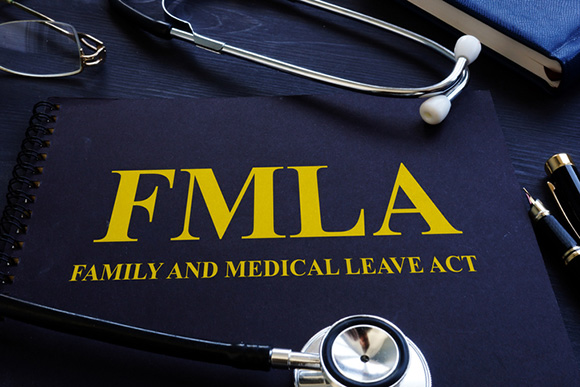The coronavirus relief bill signed by President Donald Trump late Wednesday contains, among its many provisions, several tax credits for employers who provide paid sick leave or family or medical leave for their employees who miss work for various coronavirus-related reasons.
The Families First Coronavirus Response Act, H.R. 6021, passed the House of Representatives on Monday by unanimous consent and passed the Senate Wednesday by a vote of 90–8.
Here is a look at its tax credit provisions.
Payroll Tax Credit for Required Paid Family Leave
Subject to certain limitations, the bill provides an employer payroll tax credit that equals 100% of the qualified family leave wages paid by the employer under the portion of the bill known as the Emergency Family and Medical Leave Expansion Act (Division C of the bill). The Emergency Family and Medical Leave Expansion Act requires employers with fewer than 500 employees to provide public health emergency leave under the Family and Medical Leave Act (FMLA), P.L. 103-3.
This applies when an employee is unable to work, or telework due to a need for leave to care for a son or daughter under age 18 because the school or place of care has been closed, or the child care provider is unavailable, due to a public health emergency related to COVID-19. Employers with fewer than 50 employees can be exempted from the requirement.

What Are the Details of the Payroll Tax Credit for Paid Family Leave?
The credit is available for eligible wages paid during a period that begins on a date starting within 15 days of enactment (to be designated by Treasury) and through Dec. 31, 2020. The credit would apply against the employer portion of Sec. 3111(a) old age, survivors, and disability insurance (OASDI) taxes or Sec. 3221(a) Tier 1 Railroad Retirement Act excise taxes. The credit is generally available for up to $200 in wages for each day an employee receives qualified family leave wages. A maximum of $10,000 in wages per employee would be eligible for the credit. The amount of the credit is increased by the amount of the Sec. 3111(b) Medicare tax imposed on the qualified family leave wages for which credit is allowed.
If an employer claims the credit, the employer’s gross income will be increased by the amount of the credit. This means the credit is not taken into account for purposes of determining any amount allowable as a payroll tax deduction, deduction for qualified family leave wages, or deduction for health plan expenses. Additionally, no credit will be allowed for wages for which a Sec. 45S family and medical leave credit is claimed.
The credit would not apply to the U.S. federal government, the government of any state or any subdivision of a state, or any agencies or instrumentalities of the foregoing. Employers can elect not to apply the new provision for any calendar quarter.
Self-Employed Individuals
Self-employed individuals would be eligible for a refundable credit against income tax for qualified family leave equivalent amounts. An eligible self-employed individual is an individual who regularly carries on any trade or business (as defined in Sec. 1402) and would be entitled to receive paid leave under the Emergency Family and Medical Leave Expansion Act if the individual were an employee.
Wages paid under the Emergency Family and Medical Leave Expansion Act are not considered wages for purposes of the Sec. 3111(a) OASDI tax or the Sec. 3221(a) Railroad Retirement Act excise taxes.
Payroll Tax Credit for Required Paid Sick Leave
Subject to certain limitations, the bill provides an employer payroll tax credit that equals 100% of the qualified sick leave wages paid by the employer under the portion of the bill known as the Emergency Paid Sick Leave Act (Division E of the bill). The Emergency Paid Sick Leave Act requires employers with fewer than 500 employees to provide up to 80 hours of paid sick time through the end of this year if:
- The employee is unable to work due to being quarantined or self-quarantined or having COVID-19
- The employee is caring for someone who is quarantined or self-quarantined or has COVID-19
- The employee is caring for children whose school has been closed because of COVID-19 precautions.
Employers with fewer than 50 employees can be exempted from the requirement.
What Are the Details of the Payroll Tax Credit for Required Paid Sick Leave?
The credit is effective for sick leave wages paid starting on a date within 15 days of enactment (to be designated by Treasury) and through Dec. 31, 2020. The credit will apply against Sec. 3111(a) OASDI taxes or Sec. 3221(a) Tier 1 Railroad Retirement Act excise taxes. The credit is generally available for up to $511 in wages (for workers who are quarantined or self-quarantined or who have COVID-19) and wages of up to $200 for other workers for each day an employee receives qualified sick leave pay. The credit would be available for up to 10 days per calendar quarter. The amount of the credit is increased by the amount of the Sec. 3111(b) Medicare tax imposed on the qualified sick leave wages for which credit is allowed.
To prevent double benefits, employers’ gross income will be increased by the amount of the credit. This means the credit is not taken into account for purposes of determining any amount allowable as a payroll tax deduction, deduction for qualified sick leave wages, or deduction for health plan expenses. Additionally, no credit will be allowed for wages for which a Sec. 45S family and medical leave credit is claimed. The credit would not apply to the federal government, the government of any state or any subdivision of a state, or any agencies or instrumentalities of these entities. Employers also could elect not to apply the new provision for any calendar quarter.
The credit can be increased by certain qualified health plan expenses of the employer that are allocable to qualified sick leave wages for which the credit is allowed.
Self-Employed Individuals
The bill also provides eligible self-employed taxpayers with a refundable credit against income tax for qualified sick leave equivalent amounts. An eligible self-employed individual is an individual who regularly carries on any trade or business (as defined in Sec. 1402) and would be entitled to receive paid leave under the Emergency Paid Sick Leave Act if the individual were an employee.
Wages paid under the Emergency Paid Sick Leave Act are not considered wages for purposes of the Sec. 3111(a) OASDI tax or the Sec. 3221(a) Railroad Retirement Act excise taxes.
Source
Nevius, A. M. (2020, March 19). Coronavirus relief bill contains tax credits for employers. Retrieved 20 March 2020 from https://www.journalofaccountancy.com/news/2020/mar/coronavirus-relief-bill-tax-credits-for-employers-23225.html
Disclaimer: The information in this article comes from the source link above.





